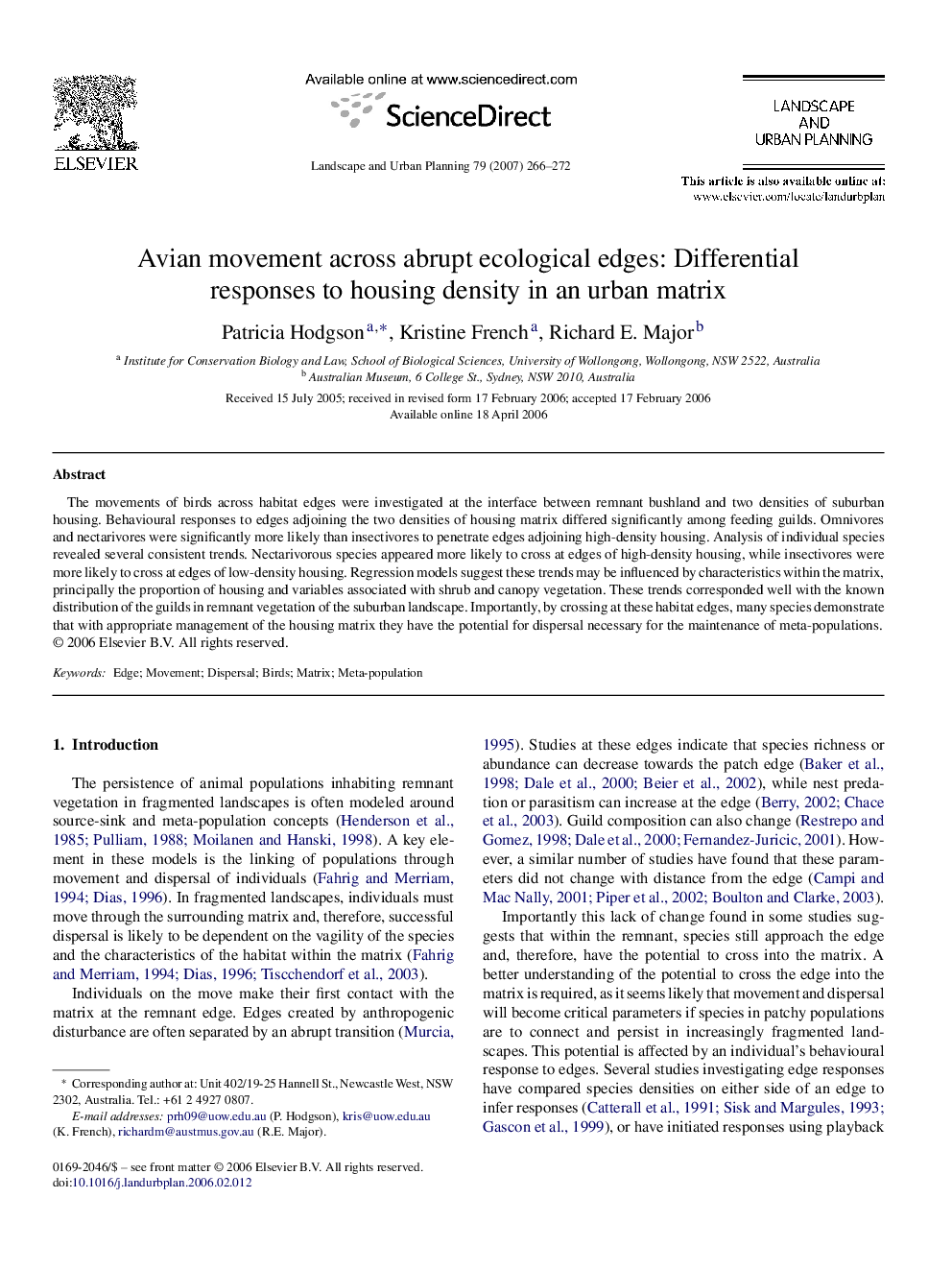| Article ID | Journal | Published Year | Pages | File Type |
|---|---|---|---|---|
| 1050639 | Landscape and Urban Planning | 2007 | 7 Pages |
The movements of birds across habitat edges were investigated at the interface between remnant bushland and two densities of suburban housing. Behavioural responses to edges adjoining the two densities of housing matrix differed significantly among feeding guilds. Omnivores and nectarivores were significantly more likely than insectivores to penetrate edges adjoining high-density housing. Analysis of individual species revealed several consistent trends. Nectarivorous species appeared more likely to cross at edges of high-density housing, while insectivores were more likely to cross at edges of low-density housing. Regression models suggest these trends may be influenced by characteristics within the matrix, principally the proportion of housing and variables associated with shrub and canopy vegetation. These trends corresponded well with the known distribution of the guilds in remnant vegetation of the suburban landscape. Importantly, by crossing at these habitat edges, many species demonstrate that with appropriate management of the housing matrix they have the potential for dispersal necessary for the maintenance of meta-populations.
